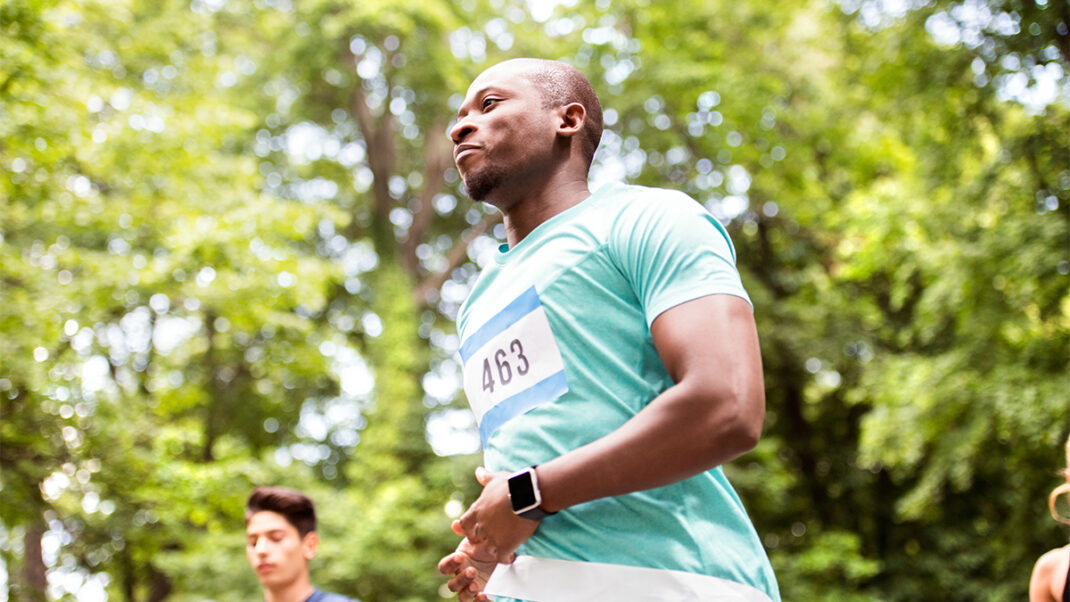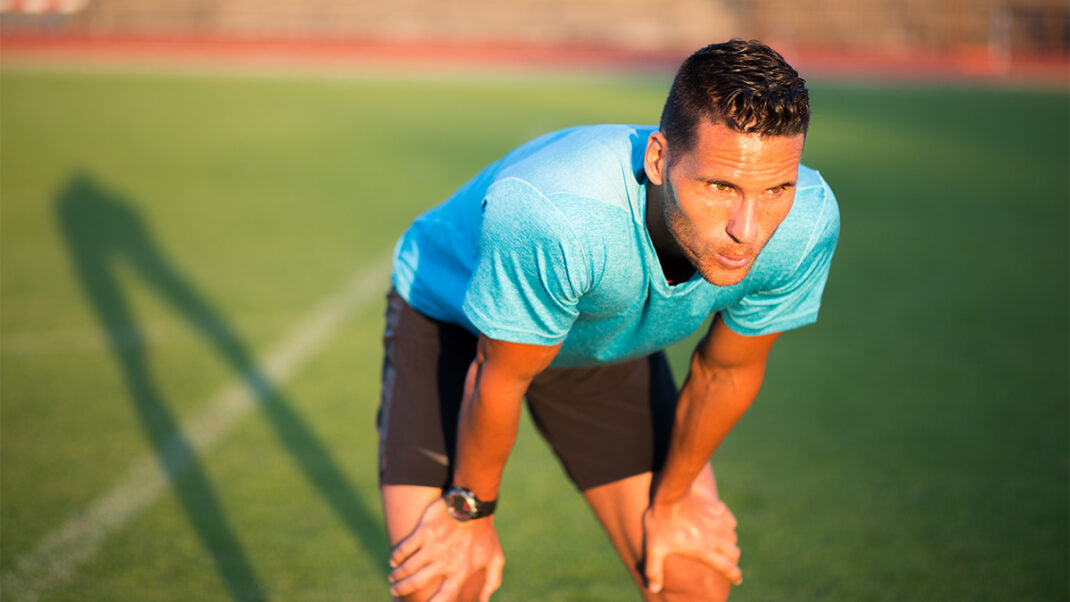The Body Image We See and Feel
The latest research on how body image is felt by children, men and ethnic groups.
When was the last time you heard a toddler say she couldn’t come out to play because she was having a bad hair day? How many young kids do you know who’ll refuse an ice-cream cone because they want to squeeze into their “skinny jeans”?
The truth is that we are not born with a body image. The way we feel about how we look is learned and influenced by family, friends and the media. It is also influenced—positively or negatively—by our race, our gender and the culture in which we are raised.
What is body image? Broadly defined, “body image” is the conception or picture a person has of his or her own body. There is clear evidence that negative body image is linked to serious health and emotional problems. People with poor body image are more likely to experience depression, disordered eating and anxiety disorders. They are also more likely to go to unhealthy lengths to change or alter their bodies and their appearance.
Most articles written on body image focus on women and adolescents, but concerns about outward appearance affect both genders and span all cultures, ethnicities and
socioeconomic groups.
Knowing how body image affects your clients can help you create fitness programs that inspire well-being, self-esteem and confidence. By understanding how different groups of people form their body images, you may be able to influence clients’ health and fitness behaviors more effectively.
Human infants begin to recognize themselves in a mirror at about 2 years of age. Unfortunately, the seeds of discontent about their physical appearance are often planted at a fairly young age.
In one study involving American girls, as many as 65 percent of participants had formed ideas about dieting by age 5. Girls were especially likely to be in this group if their mothers said they had dieted recently themselves (Abramovitz & Birch 2000). This type of conditioning is not confined to American girls. A recent analysis of literature on negative body image in children confirms the prevalence of widespread dissatisfaction in countries around the world; the authors cite numerous instances in which almost half the girls studied were dissatisfied with their body size (Littleton & Ollendick 2003). For example, a 1999 Swedish study found that 25 percent of the young female subjects had dieted by age 7 and were already suffering from “body image distortion” by estimating themselves to be larger than they really were (Oberg & Tornstam 1999).
Practical Strategies. According to the American College of Sports Medicine (ACSM), parents can play an important role in shaping body image in children. ACSM recommends that parents avoid making negative comments about their own bodies in front of young children and refrain from commenting negatively about children’s physical appearance (ACSM 2003). Pointing out examples of different body types in books and on TV can also expand a child’s frame of reference, especially when those images are of accomplished people who are famous not because they are beautiful or buff.
Adolescents
By the time many children enter adolescence, body dissatisfaction is firmly entrenched. A recent study on weight-related behavior in adolescents of both genders confirmed that approximately 50 percent of preteen girls had dieted in the past, compared with about 20 percent of boys the same age (Neumark-Sztainer & Hannan 2000). The lower rate of dieting among boys is in keeping with the findings of another study on body image in male adolescents. Their favored method of altering body shape was exercise, not changing diet or eating patterns (McCabe & Ricciardelli 2001).
However, while boys tend to go through a short phase of relative dissatisfaction with their appearance in early adolescence, the physical changes associated with puberty soon bring them closer to the masculine “ideal.” They get taller, broader in the shoulders and more muscular. But for girls, puberty only makes things worse. The normal physical changes—i.e., increases in weight and body fat, particularly on the hips and thighs—propel them even further from the cultural ideal of unnatural slimness (O’Dea & Abraham 2000).
Even adolescent girls whose weight is at or below normal want to lose pounds. A Harvard University study revealed that up to two-thirds of underweight 12-year-old girls consider themselves too fat (Nichter 2000). By age 13, at least 50 percent of girls are significantly unhappy about their appearance. By age 14, focused, specific dissatisfactions have intensified, particularly in regard to girls’ maturing hips and thighs. By the ripe old age of 17, only 3 out of 10 girls have not succumbed to dieting. And as many as 8 out of 10 adolescent girls are reportedly unhappy with what they see in the mirror (Nichter 2000).
Practical Strategies. One key to promoting a more positive body image is to focus on building self-esteem. Researchers from Australia developed an educational program to improve body image in males and females aged 11 to 14 years (O’Dea & Abraham 2000; O’Dea 2002). Interventions included having the kids identify and appreciate unique features in themselves; creating posters of stereotypical body images promoted by the media; and raising awareness of how others can affect their self-image. As a result, the adolescents ultimately became more accepting of their bodies, felt more comfortable with their peers and were less likely to place importance on being thin.
One way to adapt some of these strategies is to find opportunities to downplay the unrealistic body images promoted in the media. For example, remind adolescents that their teen idols are “perfect” owing to surgical enhancement and careful photo airbrushing.
Fitness professionals can create exercise programs that inspire teamwork, physical accomplishment and pure old unadulterated fun. Although sports can help some kids better their self-esteem, some adolescents thrive more in a noncompetitive atmosphere. For example, training programs for running or outdoor hiking clubs can boost an adolescent’s sense of physical esteem.
Men
Men generally have a much more positive body image than women. In fact, many men overestimate their physical attractiveness! However, both genders tend to “compartmentalize” their bodies, meaning they focus on parts of their bodies, rather than looking at them as a whole. The main centers of body dissatisfaction among men are usually height, hair loss, stomach and chest.
Unfortunately, there is growing evidence that negative body image is increasing in men. This is especially true of middle-aged men, who may be undergoing the so-called “male menopause” or “midlife crisis.”
Another new phenomenon seen more in men—especially fit men—is muscle dysmorphia, or a preoccupation with building muscle and losing fat. This is often manifested in excessive weight lifting, compulsive attention to diet, frequent “body checking” (i.e., frequent looking in windows or mirrors), constant weighing and, sometimes, use of anabolic steroids (Clark 2003).
In a study conducted at the University of Wales, 303 men were asked a series of questions about their attitudes and behaviors relating to muscularity (Edwards & Launder 2000). The researchers determined that the men most desired strong, muscular upper bodies. Moreover, in order to achieve their fitness goals, the men were more likely to exercise frequently than they were to change their eating habits. The focus of their workouts was on building their arm, shoulder, chest and abdominal muscles. When asked why they wanted to be more muscular, the majority said it was to appeal to the opposite sex and to increase their self-confidence.
Practical Strategies. When training male clients, be sure to emphasize the need for a balanced workout that targets all muscle groups, not just those in the upper body. Acknowledge that the goal may be to increase muscularity in the upper body, but stress that a single body area should not be the sole focus of a fitness routine. Such advice will go further if you explain the importance of core and lower-body strength for improving sports performance and the ability to perform the activities of daily life.
Since men increase their exercise frequency and intensity to achieve their goals, keep track of how often they are working out, to determine if the regimens are excessive. Be on the lookout for the outward signs of muscle dysmorphia, such as excessive weight lifting, compulsive attention to diet, frequent body checking and constant weighing. Remind clients of the benefits of a healthy diet, since many men are reluctant to change their eating behaviors.
Women
To date, almost all the research on body image suggests that women are far more critical of their appearance than men. Regardless of their actual size, as many as 66 percent of women report feelings of dissatisfaction or inadequacy regarding their body weight, compared to 54 percent of men (Devlin & Zhu 2001). In one study, nearly a quarter of women surveyed said they considered it “essential” to maintain an attractive physical appearance and more than half said their outward appearance was “important” to them (Huang 2001).
Ironically, while men develop a negative body image because they perceive themselves to be too “small,” women usually complain about being too “big.” The main focus of dissatisfaction for women tends to be the size and shape of their bodies, particularly their hips, waists and thighs. In a recent study, about 65 percent of the women participants said they were currently trying to lose weight (Anderson et al. 2002).
Practical Strategies. The media greatly influence the way women perceive themselves. Most fashion magazines and television shows reflect an unrealistic image of what is “beautiful” (read, “thin”). It comes as no surprise, then, that research has confirmed that women feel less body satisfaction after reading fashion magazines (Thomsen et al. 2002).
In your training, go beyond reps and sets to develop women’s sense of self. For example, many of the ideas listed in “Activities to Bolster Body Image” work particularly well with women.
It is also important to recognize that women who are pregnant or have recently given birth, as well as women of particular ethnicities, may have unique needs when it comes to improving body image. See the following sections for tips on working with these special clients.
Pre- and Postnatal Women
The physical and mental changes that occur during pregnancy can present a whole new set of challenges for a woman’s body image. With an expanding midsection, swelling breasts, unstable hormones and the need to eat for two, it can be very difficult to maintain a healthy body image. During pregnancy, a woman’s focus usually turns to her lower body, and it is not uncommon to desire thinner legs, smaller hips and a flatter abdominal section.
Although most women embrace the changes of pregnancy, some can start to feel that they are losing control of their bodies. In women with a history of disordered eating, pregnancy can be either a terrifying or liberating experience. It can exacerbate the root causes of the disorder, and the health of the fetus can suffer if a woman attempts to lose weight by eating less. Conversely, those 9 months of gestation can represent a hiatus from obsessing about body image and food choices. In extremely rare cases, pregnancy can precipitate anorexia (Smith 2000).
For some women, body dissatisfaction is heightened after the baby is born. New mothers struggle to establish a new identity as they adapt to having a new and tiny person who is completely dependent on them. Fatigue sets in, and none of their old clothes fit any more!
Practical Strategies. Fitness professionals can encourage pregnant clients to embrace their new shape by exercising appropriately, getting enough rest and eating properly. Steer them to Web sites and other resources to help them feel less alone. One way to maintain a positive body image is to wear appropriately sized maternity clothing rather than trying to squeeze into nonpregnancy clothing.
Since new mothers tend to diet (rather than exercise) to shed their pregnancy pounds, encourage these clients to take their time to lose weight. It took a full 9 months to gain the weight, so they are perfectly free to take at least the same amount of time to get back to their original weight. (Some will never return to their premotherhood size and they need to be told that that, too, is okay!) New moms—especially those who are breast-feeding—need all the energy they can get, so explain the dangers of restricting their food intake.
After giving birth, women are less inclined to exercise regularly, owing to time constraints, sleep deprivation and lack of child care. Programs tailored to new mothers are especially helpful at providing the support needed during this special and challenging time.
Women of Ethnicities
Women of different races often struggle with the way our Western culture promotes the image of a very thin Caucasian woman as the beauty ideal. Understandably, women from other ethnic groups have difficulty relating to this image because it doesn’t look anything like them!
Women in other ethnic/racial groups tend to be more satisfied with their bodies than Caucasian women are. For example, one study found that African-American and Latina women accept their bodies more than their Caucasian counterparts do and are more likely to reject the media’s ideal of what constitutes beauty (Rubin, Fitts & Becker 2003).
This is not to say that non-Caucasian women are free of body image concerns; in fact, negative body image is becoming more and more of an issue for these women. However, non-Caucasian women have different values and beliefs than Caucasian women regarding body image. The former tend to place more importance on taking care of themselves and having a sense of personal style. In one study, the Caucasian women subjects equated beauty with a Barbie doll image, whereas the African-American subjects defined beauty as a combination of attitude, style and personality (Rubin, Fitts & Becker 2003). In other words, they were less concerned about how their bodies looked and more focused on how they represented themselves.
African-American women in particular tend to be more accepting of being overweight, as evidenced by a study that found that 40 percent of African-American women who were moderately or severely overweight still rated their bodies as “attractive or very attractive” (Patt et al. 2002)
The point at which ethnic women were exposed to Western beliefs is sometimes a factor. In one study of Mexican women who had immigrated to the United States, those who arrived after age 17 were less likely to hold to the prevailing superthin ideal than those who were younger and more impressionable when they came (Chammorro & Flores-Ortiz 2000).
Practical Strategies. The more accepting attitudes seen in minority women are not in keeping with those of Caucasian women, who typically have more rigid ideals of beauty and, consequently, greater body dissatisfaction. Fitness professionals can encourage minority women to hold true to their belief systems and not be swayed by the unrealistic body images promulgated in the media.
One way to do this is to find opportunities to celebrate the differences among cultures. For example, ensure that any materials posted in your club include images of people from different cultures and races. Find images of people with a healthy (but not idealized) body weight who convey a sense of being comfortable in their bodies.
Be a Good Role Model
It is extremely helpful for fitness professionals to be knowledgeable about how different clients deal with body dissatisfaction
issues. Although research in this area has provided valuable information about certain populations, more studies are needed on how body image affects other groups, such as older adults.
No matter what group you work with, one of the most important things you can do as a fitness professional is to promote realistic images of different fit and healthy body types. Get educated on the issues that affect your clients and be sensitive to their needs. Refrain from making comments about your own weight or body shape in your classes and sessions. Don’t equate exercise with losing weight; instead, focus on the health benefits of being fit. Above all else, find every occasion to be a positive example of a healthy body image for your clients.
Negative body image is
- having a distorted perception of your shape
- believing that only other people are attractive
- being ashamed, self-conscious and anxious about your body
- feeling uncomfortable and awkward in your body
Positive body image is
- having a true perception of your shape
- celebrating and appreciating your natural body shape
- understanding that a person’s physical appearance says very little about his or her character and value as a person
- being proud and accepting of your unique body
- refusing to spend an unreasonable amount of time worrying about food, weight and calories
- feeling comfortable and confident in your body
Share the following with your clients today!
- Care for and value your body at all times.
- Dress in a way that makes you feel good right now.
- Find a physical activity that is pleasant and sustainable; accomplishing something physical will boost your self-esteem.
- Learn to trust your body.
- Look in the mirror without judging yourself; view yourself as a whole person instead of compartmentalizing your body.
- Set your goals in terms of achieving physical health and emotional well-being rather than obsessing about your physical appearance.
Magazine Montage. Bring in a variety of consumer magazines. Have participants create two different collages of ads, one showing healthy images and the other showing negative, unrealistic images. Then have everyone use colored markers to draw silly images on the negative collage. This exercise helps identify how few healthy ideals appear in the mainstream press and allows people to “cross out” the negative images from their reality.
Breaking the Mold. Provide a container of clay or some other molding compound. Ask participants to create a shape that shows who they are and what they like about themselves. This activity forces participants to recognize their best qualities beyond simply physical beauty. Don’t set any rules, and let people choose whether to be abstract or realistic in the form they choose.
Celebrating Self. This exercise focuses on recognizing and celebrating the positive qualities we see in ourselves and in others. Have participants shout out different words that denote the attributes they see in their fellow participants or themselves. Write the class’s responses on one community page, or have participants break out into pairs and write down positive qualities they see in their partners.
Mirror, Mirror. Have everyone look in the mirror (preferably one that is full-length). Ask people whether they see themselves as whole images or whether they only see different body parts, such as their thighs or hips. Many people compartmentalize and see only the body areas they dislike. Remind your clients to recognize their positive qualities as whole human beings and to stop dwelling on their individual flaws.
About-Face (a nonprofit group designed to combat negative body image in women), www.about-face.org
Association of Anorexia Nervosa and Associated Disorders, www.anad.org
Massachusetts Eating Disorder Association, www.medainc.org
National Eating Disorders Association, www.nationaleating disorders.org
National Women’s Health Information Center (NWHIC), www.4woman.gov/bodyimage/
References
American College of Sports Medicine (ACSM). 2003. Body dissatisfaction can lead to excessive exercise, compulsive dieting and eating disorders. Press release issued on April 10.
Anderson, L.A., et al. 2002. Relationship of satisfaction with body size and trying to lose weight in a national survey of overweight and obese women aged 40 and older, United States. Preventive Medicine, 35 (4), 390-6.
Chammorro, R., & Y. Flores-Ortiz. 2000. Acculturation and disordered eating patterns among Mexican-American women. International Journal of Eating Disorders, 28, 125-9.
Clark, N. 2003. Mirror, mirror on the wall: Do men have unrealistic ideals for body image? www.active.com; retrieved April 15, 2003.
Devlin, M., & A. Zhu. 2001. Body image in the balance. Journal of the American Medical Association (JAMA), 286 (17), 2159.
Edwards, S., & C. Launder. 2000. Investigating muscularity concerns in male body image: Development of the Swansea Muscularity Attitudes Questionnaire. International Journal of Eating Disorders, 28 (1), 120-4.
Huang, A. 2001. Rethinking the approach to beauty in medicine. JAMA, 286 (17), 2158.
Littleton, H., & T. Ollendick. 2003. Negative body image and disordered eating behavior in children and adolescents: What places youth at risk and how can these problems be prevented? Clinical Child and Family Psychology Review, 6 (1), 51-66.
McCabe, M., & L. Ricciardelli. 2001. Body image and body change techniques among young adolescent boys. European Eating Disorders Review, 9, 335-47.
Neumark-Sztainer, D., & P. Hannan. 2000. Weight-related behaviors among adolescent girls and boys. Archives of Pediatric Adolescent Medicine, 154, 569.
Nichter, M. 2000. Fat Talk: What Girls and Their Parents Say About Dieting. Cambridge, MA: University Press.
Oberg, P., & L. Tornstam. 1999. Body images among men and women of different ages. Ageing and Society, 19, 629-44.
O’Dea, J. 2002. Body basics: A nutrition education program for adolescents about food, nutrition, growth, body image and weight control. Journal of the American Dietetic Association, 102 (3), S68-70.
O’Dea, J., & S. Abraham. 2000. Improving body image, eating attitudes and behaviors of young male and female adolescents: A new educational approach that focuses on self-esteem. International Journal of Eating Disorders, 28 (1), 43-57.
Patt, M.R., et al. 2002. Body image assessment: Comparison of figure rating scales among urban Black women. Ethnicity & Disease, 12 (1), 54-62.
Rubin, L., M. Fitts & A.E. Becker. 2003. “Whatever feels good in my soul”: Body ethics and aesthetics among African-American and Latina women. Culture, Medicine and Psychiatry, 27 (1), 49-75.
Smith, C. 2000. Eating disorders during pregnancy: A dangerous mix. Childbirth Instructor (January-February).
Thomsen, S., et al. 2002. The relationship between reading beauty and fashion magazines and the use of pathogenic dieting methods among adolescent females. Adolescence, 37 (12), 145.
Lisa Druxman, MA
Lisa Druxman, MA, is the owner and founder of Stroller StridesÔäó. She holds a masterÔÇÖs degree in exercise science and is a recognized presenter, writer and instructor. Certification: ACE





